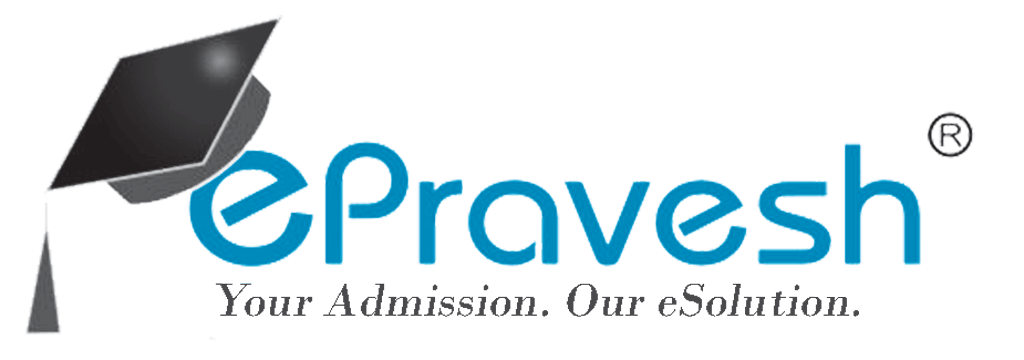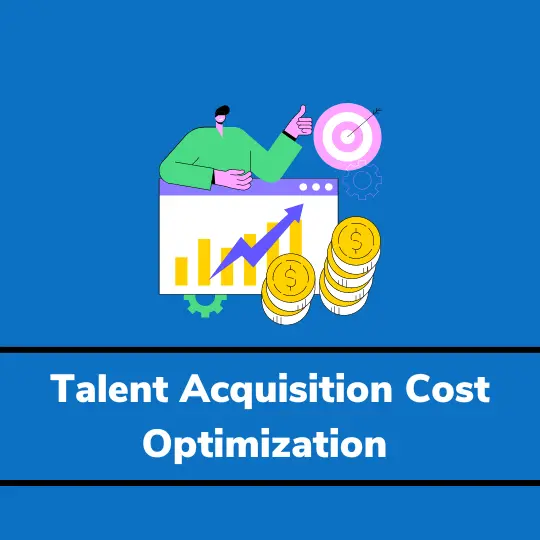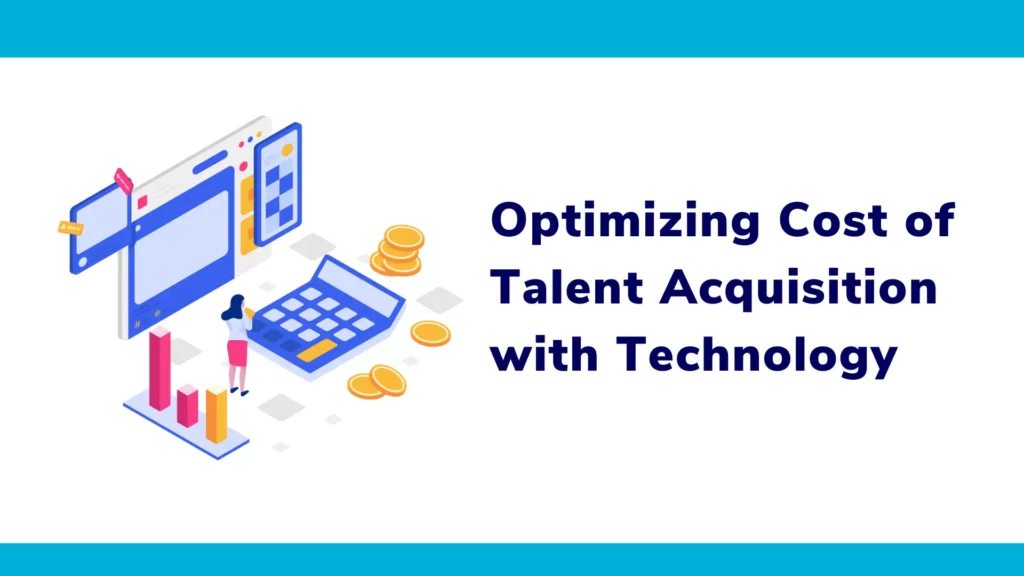
Article Contents
Introduction
Talent acquisition cost has been a concern in recent years. Considering increased attrition rates across the globe, it is becoming important for corporates to attract new talent and retain existing human resources. This article will explore the role of technology in Talent Acquisition Cost optimization and its impact on the recruitment process.
What is talent acquisition cost?
Talent acquisition cost is basically the total amount of money spent on attracting, hiring, and onboarding new employees. This further includes costs spent on advertising, recruitment agency fees, and employee referral bonuses. On average, it can cost a company between $3,000 to $15,000 to fill an open position, making TAC optimization an important consideration for organizations.
Why is it important to optimize the cost of talent acquisition?
Talent Acquisition Cost optimization is a critical aspect for organizations to maximize their recruitment budgets and reduce their overall spending. With the increasing competition for top talent, it is critical for organizations to have effective recruitment strategies that balance cost and quality.
Many organizations across the globe have identified that the use of technology can help reduce Talent Acquisition Cost while improving the quality of hires. A study by the SHRM found that those companies which utilize digital tools could see a reduced time-to-hire of 43% and a reduced cost-per-hire of 60%.
The Role of Technology in Talent Identification:
The core processes of talent acquisition can be automated in part or fully using novel tools.
Here are the Talent Acquisition processes that you can streamline using advanced technology:
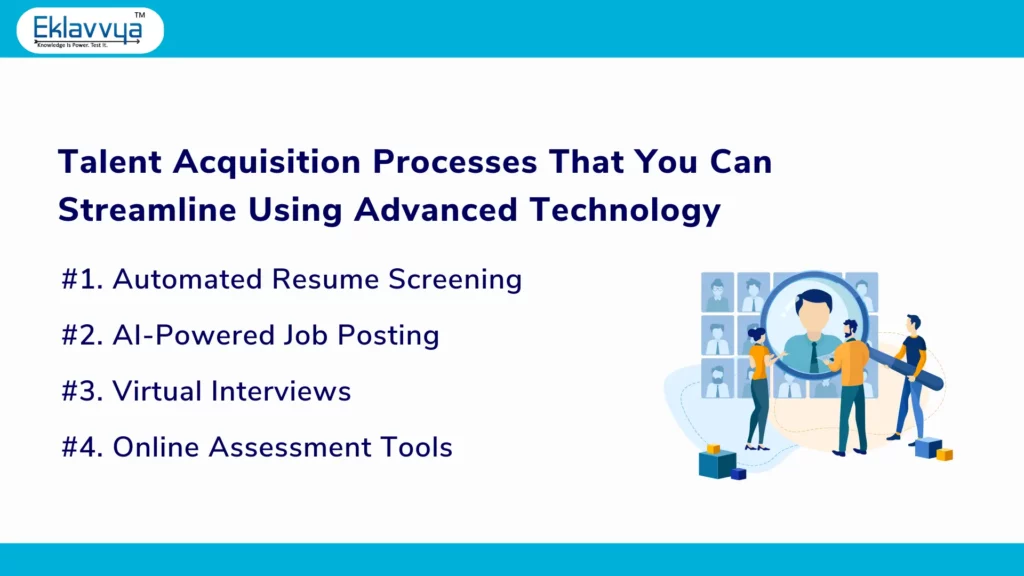
1) Automated Resume Screening:
Automated resume screening tools can help organizations quickly and efficiently screen large volumes of resumes, reducing the time and cost associated with manual screening processes. For example, Unilever uses AI-powered technology to screen resumes and shortlist candidates, reducing their time-to-hire from 12 weeks to just 6 weeks.
2) AI-Powered Job Posting:
AI-powered job posting tools can help organizations reach a larger audience of qualified candidates, reducing their reliance on recruitment agencies and job boards and saving them money in the process. For example, Hilton Worldwide uses AI-powered job postings to increase the visibility of its job postings and reach a wider audience of candidates.
3) Virtual Interviews:
Virtual interview technology has become increasingly popular during the COVID-19 pandemic and has many benefits, including reducing travel costs and time-to-hire. For example, IBM uses virtual interview technology to conduct initial candidate screenings, saving the company an estimated $30,000 per year in travel costs.
4) Online Assessment Tools:
Online assessment tools, with their feature of data analytics, can provide organizations with valuable insights about the overall compatibility of the candidate for the job role, helping them make informed hiring decisions and reduce the risk of bad hires. A study by the Talent Board found that organizations using online assessment tools saw a 48% reduction in turnover rates.
Cost Optimization through Technology:
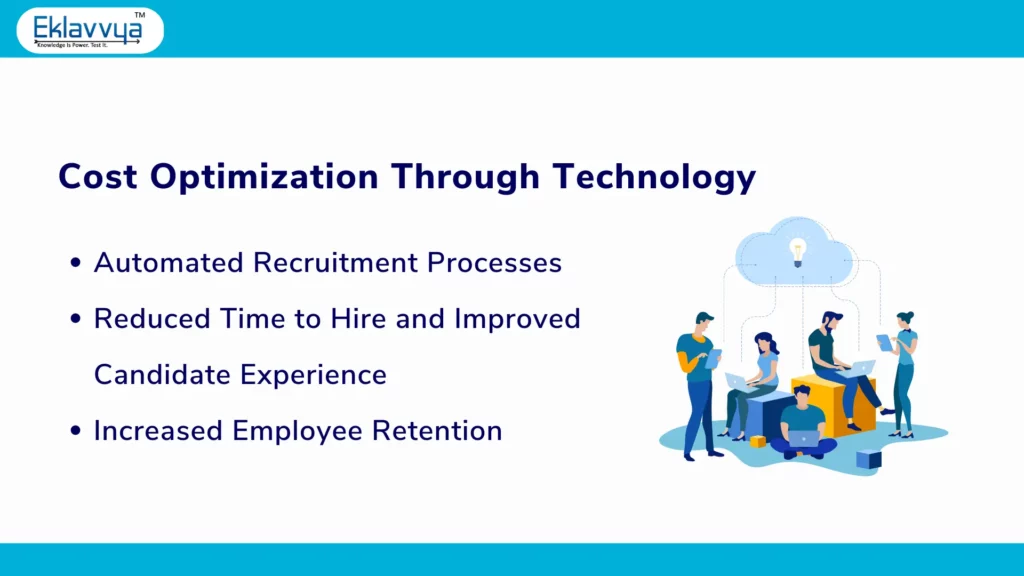
1. Automated Recruitment Processes:
Automated recruitment processes can help organizations streamline their recruitment processes, reducing time-to-hire and freeing up recruiters to focus on more strategic tasks. For example, Amazon has implemented an end-to-end automated recruitment process, resulting in a 50% reduction in time-to-hire and a 30% improvement in overall recruitment efficiency.
2. Reduced Time to Hire & Improved Candidate Experience:
By using technology to automate routine tasks and streamline recruitment processes, organizations can create a better candidate experience, attract top talent, and reduce the risk of losing potential hires by further improving the hiring time. A survey by the Talent Board found that organizations with a positive candidate experience had a 50% lower cost-per-hire than those with a negative experience.
By making data-driven hiring decisions and using technology to assess candidate fit and potential, organizations can reduce the risk of bad hires and improve employee retention. According to a study by the Talent Board, organizations using online assessment tools saw a 48% reduction in turnover rates.
3. Increased Employee Retention:
By making data-driven hiring decisions and using technology to assess candidate fit and potential, organizations can reduce the risk of bad hires and improve employee retention. According to a study by the Talent Board, organizations using online assessment tools saw a 48% reduction in turnover rates.
Conclusion
As organizations face increasing competition for top talent, it’s crucial to have effective recruitment strategies that balance cost and quality. By leveraging technology, organizations can streamline their recruitment processes, reduce TAC, and improve the quality of hires.
Optimizing TAC is crucial for organizations in today’s competitive talent market. By leveraging technology, organizations can streamline their recruitment processes, reduce TAC, and improve the quality of hires.
References
- Society for Human Resource Management (SHRM) study on the impact of ATS on TAC optimization
- Recruitment Process Outsourcing Association (RPOA) study on the impact of online job boards on advertising costs
- Talent Board survey on the impact of candidate experience on TAC
- Talent Board study on the impact of online assessments on employee retention
